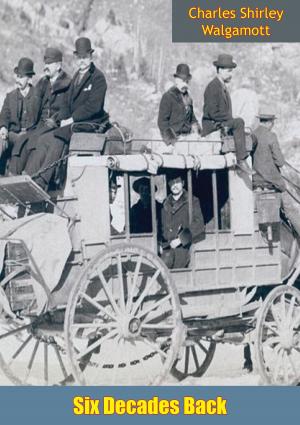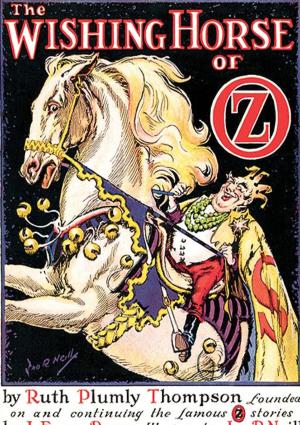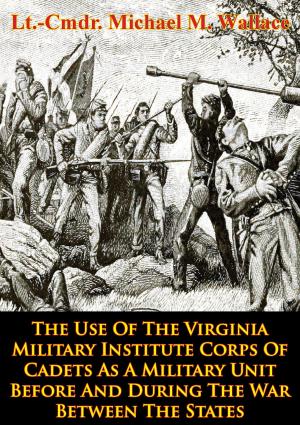Taming The Tar Heel Department: D.H. Hill And The Challenges Of Operational-Level Command During The American Civil War
Nonfiction, History, Modern, 19th Century, Americas, United States, Civil War Period (1850-1877), Military| Author: | Major Brit K. Erslev | ISBN: | 9781786255860 |
| Publisher: | Golden Springs Publishing | Publication: | November 6, 2015 |
| Imprint: | Golden Springs Publishing | Language: | English |
| Author: | Major Brit K. Erslev |
| ISBN: | 9781786255860 |
| Publisher: | Golden Springs Publishing |
| Publication: | November 6, 2015 |
| Imprint: | Golden Springs Publishing |
| Language: | English |
The purpose of this monograph is to identify skills and capabilities required by commanders to excel at the operational level of war and in the practice of operational art. The author evaluated the performance of Confederate Major General Daniel Harvey Hill in his role as a department commander during the American Civil War. Department commanders were responsible for sequencing tactical operations to support the accomplishment of their government’s strategic objectives but received little guidance on how to fulfill their missions. The monograph concludes that twenty first century American military officers in similar command positions must be able to make decisions given ambiguous guidance and a fluid operational environment, be creative and active in developing innovative techniques to better understand the operational environment, and be able to craft holistic campaign plans that go beyond offensive and defensive operations.
An examination of Hill’s tenure as commander of the Confederate Department of North Carolina from February to July 1863 found that he was uncomfortable translating discretionary orders into action, he was unable to adequately visualize his operational environment, and he did not construct a coherent campaign plan to accomplish disparate missions and support Confederate strategic aims. Some of Hill’s struggles were due to the inability of the Confederate high command to articulate strategic priorities, the actions of the Union forces, and lack of experience in higher level commands. Previous tactical-level experiences in the war made Hill more cautious about committing force when presented with ambiguous situations and in his capacity as department commander he did not grasp his responsibility to provide recommendations to strategic-level decision makers regarding force disposition and types of combat operations.
The purpose of this monograph is to identify skills and capabilities required by commanders to excel at the operational level of war and in the practice of operational art. The author evaluated the performance of Confederate Major General Daniel Harvey Hill in his role as a department commander during the American Civil War. Department commanders were responsible for sequencing tactical operations to support the accomplishment of their government’s strategic objectives but received little guidance on how to fulfill their missions. The monograph concludes that twenty first century American military officers in similar command positions must be able to make decisions given ambiguous guidance and a fluid operational environment, be creative and active in developing innovative techniques to better understand the operational environment, and be able to craft holistic campaign plans that go beyond offensive and defensive operations.
An examination of Hill’s tenure as commander of the Confederate Department of North Carolina from February to July 1863 found that he was uncomfortable translating discretionary orders into action, he was unable to adequately visualize his operational environment, and he did not construct a coherent campaign plan to accomplish disparate missions and support Confederate strategic aims. Some of Hill’s struggles were due to the inability of the Confederate high command to articulate strategic priorities, the actions of the Union forces, and lack of experience in higher level commands. Previous tactical-level experiences in the war made Hill more cautious about committing force when presented with ambiguous situations and in his capacity as department commander he did not grasp his responsibility to provide recommendations to strategic-level decision makers regarding force disposition and types of combat operations.


![Cover of the book With General Sheridan In Lee's Last Campaign [Illustrated Edition] by Major Brit K. Erslev](https://www.kuoky.com/images/2014/august/300x300/9781782895367-68S6_300x.jpg)


![Cover of the book Analysis Of The Relationship Between Technology And Strategy And How They Shaped The Confederate States Navy [Illustrated Edition] by Major Brit K. Erslev](https://www.kuoky.com/images/2014/august/300x300/9781782896067-yTa1_300x.jpg)






![Cover of the book Co. Aytch Maury Grays, First Tennessee Regiment Or, A Side Show Of The Big Show [Illustrated Edition] by Major Brit K. Erslev](https://www.kuoky.com/images/2015/november/300x300/9781786251176-VTnK_300x.jpg)


![Cover of the book Staff Ride Handbook For The Vicksburg Campaign, December 1862-July 1863 [Illustrated Edition] by Major Brit K. Erslev](https://www.kuoky.com/images/2015/november/300x300/9781782899358-IHvn_300x.jpg)